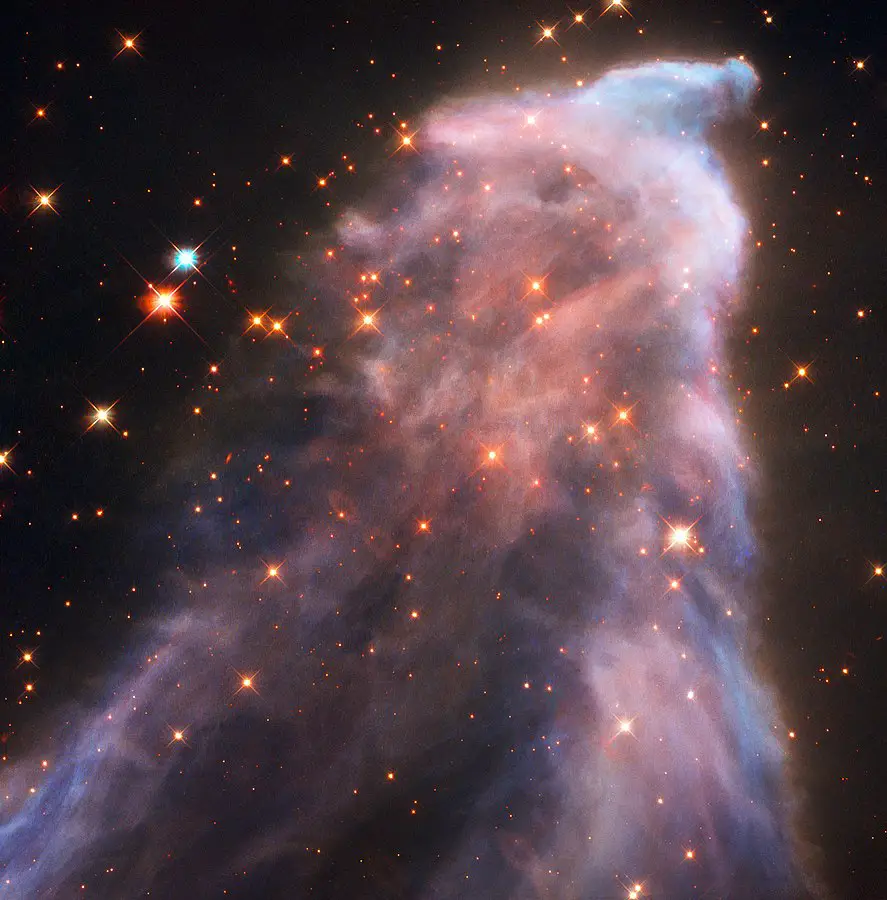For as long as astronomers can remember, the center of the Milky Way galaxy has been a subject that both mystifies and captivates them. Planetary nebulae are the specters of long-dead stars that can be found tucked away in the depths of its enormous expanse, where they provide a macabre display. Researchers have been perplexed by these mysterious structures for a very long time; however, recent discoveries made with the Hubble Space Telescope have shed light on their genesis as well as the traits that define them. Astronomers have made the exciting discovery that the planetary nebulae in the galactic bulge are not connected to one another and originate from various stars. Each of these stars has a unique history of their birth, existence, and demise in far-flung regions of the cosmos.
The Haunted Heritage of the Stellar System:
Planetary nebulae are the ethereal remains of stars that have died and were created when the gas that these stars ejected into space interacted with the space around them. These brilliant apparitions brighten the night sky and provide a look into the turbulent lifetime of stars. For ages, astronomers have been captivated by the mystery surrounding these dazzling apparitions. There are 136 of these planetary nebulae that can be found in the galactic bulge, which is one of the densest and most intriguing regions of the Milky Way. Each one is an intricate puzzle that needs to be solved.
The Secrets of the Universe Revealed by Hubble:
Astronomers have obtained a level of understanding of these celestial specters that has never been seen before because to the capabilities of the Hubble Space Telescope. A group of experts set out to conduct an exhaustive investigation with the goal of analyzing the planetary nebulae that are contained within the galactic bulge. Their observations, which were published in a seminal study, led to a stunning discovery, which is that the 136 planetary nebulae in the bulge are not connected to one another and originate from distinct stars, each of which has a different history.
A Wide Variety of Stellar Conclusions:
The recent discovery that the planetary nebulae are not connected to one another indicates that their parent stars perished at different times and resided in distinct parts of the galaxy before they exploded into the planetary nebulae. This new understanding casts doubt on some of the earlier hypotheses, which suggested that some of these nebulae could be related to one another or possibly originated in star clusters. Instead, each planetary nebula exists as an individual testimonies to a star life that was brought to a spectacular conclusion, expelling its gas into space to produce these captivating structures. These nebulas are truly breathtaking.
Binary Systems: Stellar Influence on Their Development
Astronomers also found a remarkable connection between a few different planetary nebulae in their research. It is possible for a dying star to have a substantial impact on the development of a nebula if it is in close proximity to another stellar object. There is an alignment in the planetary nebulae that can only be seen when there is a close companion present. This alignment cannot be seen in situations when there is no such partner. This fascinating alignment may suggest that close binary star systems form with their orbits inclined in the same plane, which in turn influences the shape and orientation of the planetary nebula that is produced as a result.
The Complicated Steps Involved in the Formation of Galactic Bulges
The process by which stars are formed in the bulge of the galaxy involves a complicated interaction between gravity, turbulence, and magnetic fields. Stars live their life to the fullest in this turbulent environment, which is loaded with dynamism and engagement. The alignment that was discovered in a particular subset of planetary nebulae adds a new dimension to the delicate dance of stellar development that takes place within the galactic bulge. This alignment provides clues to the dynamics that regulate the lives and deaths of these stars.
Conclusion:
The presence of the celestial ghosts known as planetary nebulae contributes significantly to the eerie allure of the galactic bulge at the center of the Milky Way. Recent discoveries made by the Hubble Space Telescope have shed light on their mysterious beginnings and properties, respectively. Now, astronomers have come to the conclusion that these ethereal structures are not connected in any way; rather, each one originated from a different star with its own unique history of birth and demise. Furthermore, the presence of close stellar companions adds a new dimension of mystery to this cosmic story, suggesting the interconnection and complexity of the dance of the stars at the center of our galaxy. Our knowledge of these spectral relics continues to expand, and as a result, we are getting closer to deciphering the alluring mysteries that are buried deep within the center of the Milky Way.
![]()
